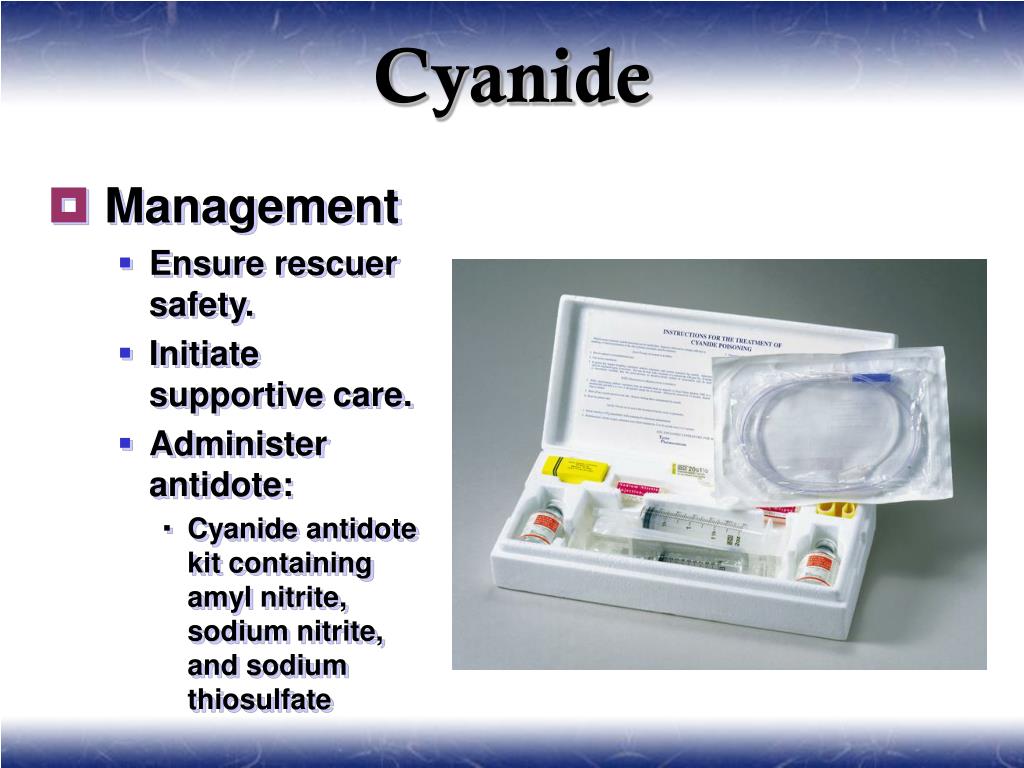

Because of its deep red color, hydroxocobalamin may cause hemodialysis machines to shut down due to an erroneous detection of a “blood leak”.While determination of blood cyanide concentration is not required for management of cyanide poisoning and should not delay treatment with CYANOKIT, collecting a pretreatment blood sample may be useful for documenting cyanide poisoning as sampling post-CYANOKIT use may be inaccurate.Be aware of this when reporting and interpreting laboratory results. Because of its deep red color, hydroxocobalamin has been found to interfere with colorimetric determination of certain laboratory parameters (e.g., clinical chemistry, hematology, coagulation, and urine parameters).

Substantial increases in blood pressure may occur following CYANOKIT therapy.Monitor renal function for 7 days following CYANOKIT therapy. Acute renal failure with acute tubular necrosis, renal impairment and urine calcium oxalate crystals have been reported following CYANOKIT therapy.

Allergic reactions including angioneurotic edema have also been reported in postmarketing experience.
Allergic reactions may include: anaphylaxis, chest tightness, edema, urticaria, pruritus, dyspnea, and rash. Consider alternative therapies, if available, in patients with known anaphylactic reactions to hydroxocobalamin or cyanocobalamin. Risk of Anaphylaxis and Other Hypersensitivity Reactions Consideration should be given to decontamination measures based on the route of exposure. In conjunction with CYANOKIT, treatment of cyanide poisoning must include immediate attention to airway patency, adequacy of oxygenation and hydration, cardiovascular support, and management of seizures. Hydroxocobalamin is an antidote that seems to have many of the characteristics of the ideal cyanide antidote: rapid onset of action, neutralizes cyanide without interfering with cellular oxygen use, tolerability and safety profiles conducive to prehospital use, safe for use with smoke-inhalation victims, not harmful when administered to non-poisoned patients, easy to administer. Hydroxocobalamin differs from these antidotes in that it has not been associated with clinically significant toxicity in antidotal doses. The potential for serious toxicity limits or prevents the use of the Cyanide Antidote Kit, dicobalt edetate, and 4-dimethylaminophenol in prehospital empiric treatment of suspected cyanide poisoning. The data available to date do not suggest obvious differences in efficacy among antidotes, with the exception of a slower onset of action of sodium thiosulfate (administered alone) than of the other antidotes. Each of the antidotes shows evidence of efficacy in animal studies and clinical experience. This paper reviews preclinical and clinical data on available cyanide antidotes and considers the profiles of these antidotes relative to properties of a hypothetical ideal cyanide antidote. Critical assessment of cyanide antidotes is needed to aid in therapeutic and administrative decisions that will improve care for victims of cyanide poisoning (particularly poisoning from enclosed-space fire-smoke inhalation), and enhance readiness for cyanide toxic terrorism and other mass-casualty incidents. The international medical community lacks consensus about the antidote or antidotes with the best risk-benefit ratio. Cyanide has several antidotes, with differing mechanisms of action and diverse toxicological, clinical, and risk-benefit profiles.







 0 kommentar(er)
0 kommentar(er)
